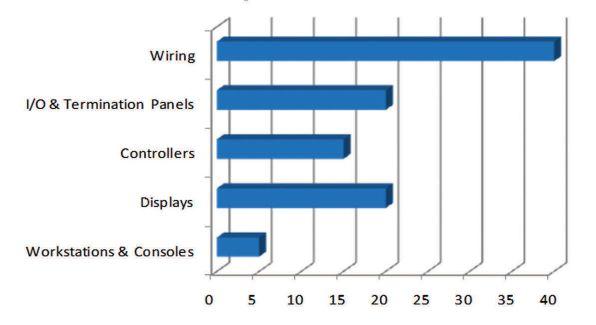
3 minute read
Technology Update: Benefits of an alarm management philosophy
Martyn Hilbers, PLC-EasyMartyn Hilbers,
Benefits of an alarm management philosophy
Advertisement
Giving operators on the manufacturing floor a simple and clear-cut philosophy for alarm management with a simple and clear-cut system can help reduce downtime and improve overall automation and efficiency.
M
More
Alarm acknowledgement is a widely accepted industry practice, but the reason why we apply alarm acknowledgement is a question not often asked. During a recent meeting for a project with the purpose of developing an alarm management philosophy and implementing an alarm rationalization, the question “why we need alarm acknowledgement” arose. The essence of an alarm is to notify operators about a process is going or is out of bounds and requires intervention because the automation system is incapable to change the situation. Alarm acknowledgement is used to help the operator manage the active alarms. It allows the operator to distinguish which alarms have been addressed and which have not, providing the operator with a to-do list.
INSIGHTS From an alarm acknowledgement standKEYWORDS: Alarm management, alarm acknowledgement point, this leads to an assumption it has been accepted the control system can generate multiple concurrent alarms that affect Alarm management is the process. It is also acceptable that the acknowledged as a need, automation is not capable to deal with many but how it is managed is not situations and/or the automation is generat-often addressed. ing too many alarms.Too many alarms on the manufacturing floor can cause confusion for Fewer alarms are more effective operators. Can we avoid too many alarms? Consider The need for alarm the following: a valve limit switch has malmanagement is tied into functioned and on opening the valve prothe level of automated and vides a failed to open alarm. The valve is manual processes on the manufacturing floor. part of an equipment module and this too needs to provide an alarm of this event. The ONLINE equipment module is part of a phase and Go to www.controleng.com the phase might be part of an operation and for additional stories about alarm management and safety. part of a procedure. In order to put the phase on hold and CONSIDER THIS possibly the operation and perhaps even a procedure, an alarm condition must be What challenges does your company face when dealing with alarms and how can they propagated from the valve up through the hierarchy. It is important to provide the be overcome? operator with a notification that explains the reason of the hold of the phase (and possibly the operation and procedure), but it is important the operator is not overwhelmed with alarms.
Alarm rationalization, efficiencies
This requires identifying possible situations involving multiple pieces of equipment and implementing alarm masking schemes for these situation to give the operator one message conveying the reason of the hold. For large processes, this is where an alarm management philosophy and the implementation of an alarm rationalization becomes important.
It will require an ongoing effort to keep the alarm rationalization and alarm-masking schemes up to date in order to provide the operator with effective alarms, however for many organizations this often falls by the wayside. The effects of neglecting alarm management are not immediately noticeable nor impactful. However the effects compound over time and lead to significant production inefficiencies.
Circling back to why we need alarm acknowledgement, the answer to that question says something about the alarm efficiency and the level of automated operation vs. manual operation of the automation.
Raising the bar on alarm acknowledgement
When sitting down to discuss and design a new automation system, should the question “do we need alarm acknowledgement” be in the top 10 of our requirement list when selecting and/or developing an automation system?
If this question is on top of the list and answered “No,” the implication is the system is expected to perform at a higher automated level, is applying alarm rationalization and requires less operator interaction. ce
Martyn Hilbers, principal engineer, PLC-Easy. Edited by Chris Vavra, associate editor, Control Engineering, CFE Media and Technology, cvavra@cfemedia.com.





